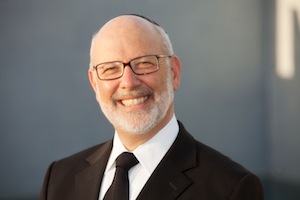So many of us, certainly I, want to change... so badly. We plan to change. We commit to change. But often we just don't. Then there are others who do not feel any compelling reason to change. They are stuck in complacency... or perhaps, in perfection! Rosh Hashanah is the time for transformation and new beginnings. But what forces can we draw on to power that change?
Discomfort is potentially the most powerful propellant of change. No one likes to feel uncomfortable and when we do, we generally try to change the situation that causes it. Sometimes discomfort is caused by external forces over which a person might have little or no control. We lose a job or a loved one, we lose money on an investment or we become ill G-d forbid. But we can also create our own discomforts to power our change. This happens when, reflecting on our lives, we feel a gap between what we believe we were capable of achieving and what we actually did achieve. We feel upset with ourselves, and let down. We can also create our own discomfort by reflecting on our aspirations and identifying the gap between the person we aspire to be and the person we are in reality. The first gap is past focused, the second is future focused. Both can lead to change if we allow ourselves to feel the discomfort with no attempt to rationalize the gaps that discomfort us. We use both these gaps during these days of reflection and Teshuva.
The forty days from Rosh Chodesh Elul until Yom Kippur (the same 40 days that Moshe was on Mount Sinai for the second tablets) draw both on our past and our future-focused gaps. The Teshuva process we engage in at this time of the year is divided into two parts:Teshuva before Rosh Hashanah during the month of Elul and the period of Selichos, and Teshuva after Rosh Hashanah during theAsseres Yemei Teshuva culminating in Yom Kippur. Pre-Rosh Hashanah Teshuvah is past focused, we measure ourselves against our own expectations of ourselves and where, over the past year we have fallen short. Feeling the discomfort of this gap we use it to correct behaviors, break habits and power change. We apologize to those we have hurt and we undertake something different for the year to come.
But that all ends on Erev Rosh Hashanah. As the sun sets on the passing year and the New Year gently slides into place, our Teshuvaprocess is interrupted. Rosh Hashanah with all its awe and majesty, contains nothing of the self-reflection, regret and remorse that characterize the days that precede it and that follow it. Instead of focusing on self, on Rosh Hashanah our focus is universal, global and Divine. We create a vision for the world as it could be under G-d's rule. We marvel at the role of the Jewish nation in this vision, and we think about the parts we can play in its realization.
With this vision in place, on Tzom Gedaliah we again confront the reality of who we are: are we worthy of the vision that entranced us during the sublime tefillos of Rosh Hashanah? Do we have what it takes to live the life we envisioned? Are we seriously enough committed to this vision and do we truly want it for ourselves? Finding ourselves back in a place of self-reflection we scrutinize the people we are. We don't only scrutinize our lofty aspirations but also our real conduct over the last year. This time though we do not measure ourselves against past expectations. In this post-Rosh Hashanah space we measure ourselves against the vision we have created for our own lives going forward and for the future of our nation and of mankind. Each of us has a part to play in the unfolding of our vision. Each of us owes it to ourselves and to one another to become and to be the quality of person able to fulfill the role for which we are destined and for which we have been created. We improve and change ourselves not because we disappointed ourselves in the past, but in order that we can realize ourselves in the future.
This explains why Yom Kippur follows Rosh Hashanah rather than precedes it: We might have expected the Asserres Yemei Teshuvato follow on the month of Elul, then Yom Kippur, and only then with our Teshuva complete should we be ready to face our Creator onYom Haddin, Rosh Hashanah. Instead Rosh Hashanah precedes the ten days of Teshuva. On Rosh Hashanah, although we are judged for what we did and for who we are, we are also judged for our aspirations, the vision we create and the part we plan to play in its realization. Even if we have failed ourselves and Hashem in the past year, a great vision for the future can assure us a positive Yom Haddin. But is our vision pie-in-the-sky or is it real? The Asserres Yemei Teshuva determines the answer to that. If we self-reflect, notice our shortcomings and act to correct them, then our vision is real and has a chance of fulfillment. It's up to us. This is whyhalachah suggests that we maintain higher halachic and ethical standards during these ten days than we do the rest of the year because during this time we have higher standards to meet, the standards we set for ourselves on Rosh Hahsanah.
Together this year, we will envision beautiful and majestic visions for ourselves and for our families, visions in which we realize our potential and help others to realize theirs. Visions that bring joy, good health and prosperity to each of us, and geulah to our People.








